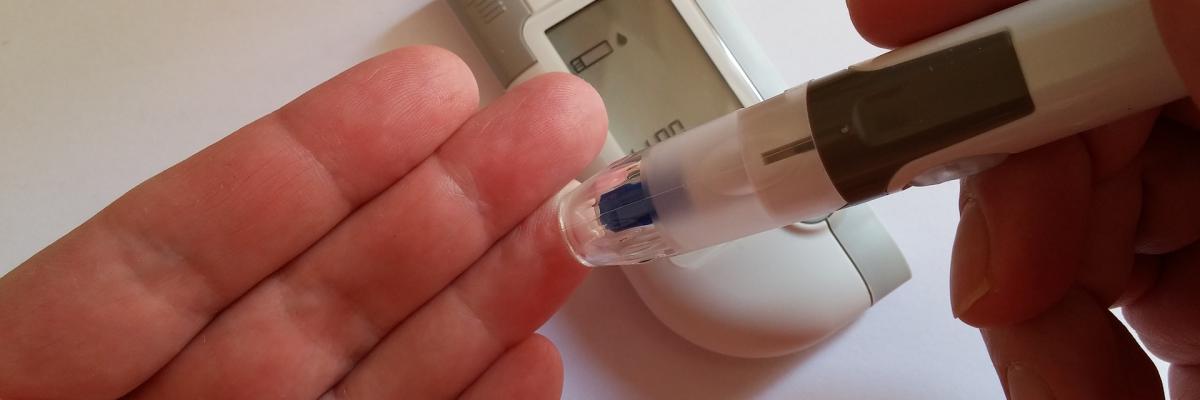“It happened suddenly.”
This is what Marie-Catherine says whenever she talks about her sight loss. It all started when she received the diagnosis of type 1 diabetes at the tender age of three. Type 1 diabetes is an auto-immune disease that occurs when the pancreatic cells producing insulin are destroyed by the immune system. From that point on, in order to keep her blood glucose level steady, Marie-Catherine had to inject herself with insulin.
At 23, she received a pancreas transplant. When she left the operating room, Marie-Catherine left behind her disease …and her eyesight.
Her pancreas transplant enabled her to live without diabetes for several years. Unfortunately, in 2014 she was rushed to the hospital by ambulance, --her pancreas had stopped producing insulin.
“It was not the same. I had to learn all over again.”
The technology had changed between her first and second diagnoses, and so did Marie-Catherine’s life. She had to adapt and learn to live with diabetes all over again, but also with sight loss.
Prior to the transplant, her blood sugar levels were determined through urine glucose tests. In 2014, it was done by capillary blood glucose testing. That meant she would have to draw a drop of blood by pricking the tip of her finger. This procedure produced far more accurate results than urine glucose testing. However, repeated finger-pricking led to a loss of sensitivity. Because of this, Marie-Catherine is unable to read braille.
To check her blood glucose level, Marie-Catherine used a talking glucometer: she had to count the number of beeps to determine the test results. As a regular user of the device, she found it to be very poorly designed and not user-friendly. She indicated that she often felt like tossing it out the window from her 6th floor apartment.
Marie-Catherine now uses a continuous glucose monitor connected to a Bluetooth device. “Talk about a game-changer,” she says. Although she still needs to use a blood glucose test on occasion, that happens far less frequently.
Despite the necessary adaptations, she sees her diabetes as a readily manageable disease for a person who is blind. She cautions that it is not always easy, but it is possible to adapt, and to even have the same quality of life as a sighted person. She remains very positive.
“It would make life easier, not only to manage the diabetes but also to facilitate access to the pump.”
Even though insulin pump manufacturers have not made their devices accessible for people with sight loss, Marie-Catherine would like to have one. Given that she is hyper-sensitive to insulin, a pump would enable her to administer doses with more precision than is possible with an insulin pen. A pump provides more accurate doses compared to a pen, which would give Marie-Catherine more control over her diabetes and spare her from hypoglycemia, which, due to her hypersensitivity, could plunge her into a coma.
If Marie-Catherine could send a message to insulin pump manufacturers, it would be to connect it to Bluetooth.
“It would make life easier, not only in terms of managing the diabetes but also in terms of accessing the pump,” she indicates.
She would also like to see it be more financially accessible. The price of a pump is more than $7,000. And that doesn’t include the cost of supplies that Diabète Québec estimates to be hundreds of dollars every month. That’s a lot more than most people can afford, especially when you need to replace an insulin pump every three years.
Since 2011, insulin pumps and their associated costs are reimbursed by the Régie d’assurance maladie du Québec for diabetics who have been using an insulin pump since age 18. That poses a problem for people like Marie-Catherine who, as you recall, received her second diagnosis of diabetes later in life. That leaves her without a pancreas and without an insulin pump.
Marie-Catherine is now 44 years old and managing well with her sight loss. While she awaits another pancreas transplant, we wish good health.
